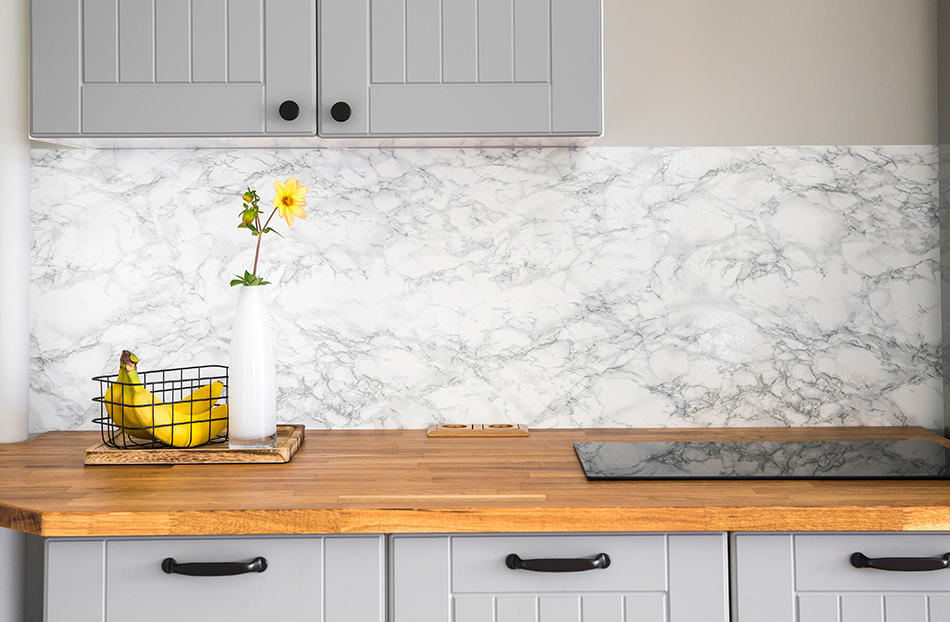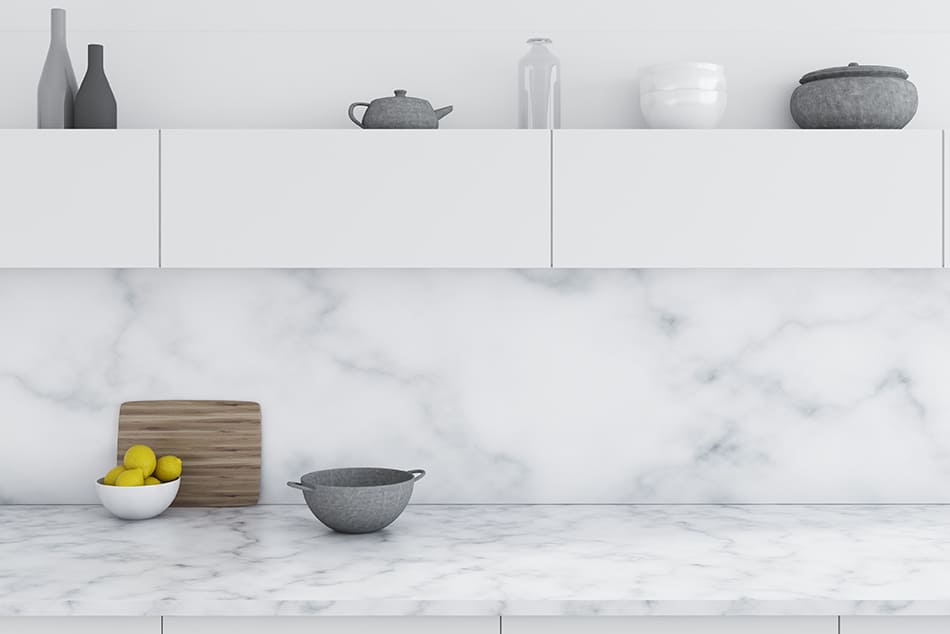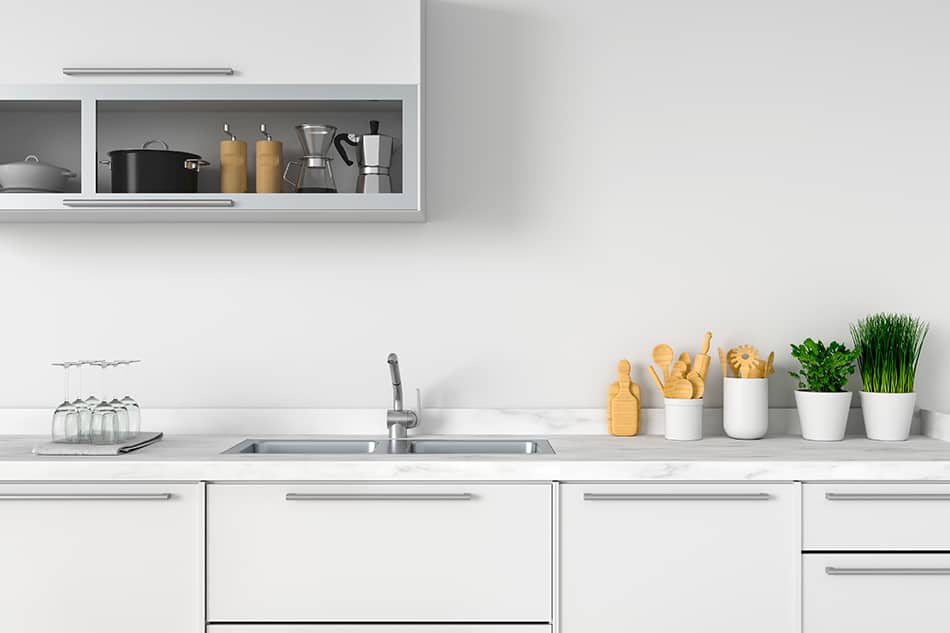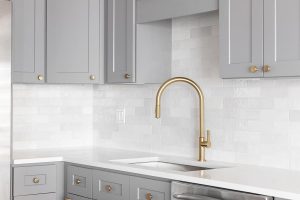Perhaps you’ve just bought a home or recently remodeled one and noticed there is a gap between your bathroom or kitchen countertop and wall. Separated countertops from the wall are an eyesore and no one wants to see such defects in their bathrooms or kitchens. Although this is a common occurrence, if left unattended, these issues can lead to further problems, such as water spills behind the countertops. Just like any other home improvement project, there are many ways you can tackle this issue.
Here we will explain the causes of countertops separating from the wall and most importantly, how to fix the gap between countertop and wall.
Causes of Countertop Separating from Wall
Gaps can break out between a countertop and wall for a number of reasons.
- Improper installation of countertop: one of the biggest culprits is the incorrect installation of countertops. If they are installed improperly, the units can come away from the wall and expose a gap. When installing countertops, make sure they are attached to the cabinet using a proper installation process.
- Faulty Countertop: another reason for the gap appearing between the wall and countertop is due to the faulty countertop material. If it’s made of wood, it may bulge due to moisture or condensation. Unevenly-cut granite countertops can also prevent correct fitting of the units.
- House foundation settling: homes often settle into the foundation as they age. The slight movement causes walls to shift in their positioning, thus new gaps appearing between the wall and the countertops as a result of these units splitting away from the wall.
- Added weight of the cabinets: sometimes the weight of the kitchen cabinets above the countertop can cause the unit to slightly move away from the wall and create a gap.
Best Ways to Close Gap Between Countertop and Wall
Trim the Gap
If the gap between the countertop and the wall is too large, it is easier to cover it using trim. There are a variety of trims if you decide to go down this route. The most common trim options are quarter-round trims and rectangular molding to hide the gap. You can use different methods for applying the trim you have selected to cover the gap. To give you some tips, here are the best trim or molding installation methods to help you in your efforts:
- Glue the trim or molding either to the wall or countertop. This can be done by using a thin layer of strong construction glue. Try to avoid using nails for attaching the molding or trim to the wall as they can damage the countertop.
- To finish the job, you may apply a coat of paint to the molding or trim. Sealing or priming after you’ve cut the trim is recommended for the best finish.
Raise the Cabinets
To raise the cabinets, find the screws that hold them to the wall. These should be located inside the cabinet’s top section. There will also be two or three more screws through the reinforcement strip that holds the back of the countertop. Once you’ve used a drill to remove all the screws, insert a flat bar to the cabinet and push the countertop closer to the wall. You will be able to raise the cabinet by as much as 1.5 inches or more. To keep the bottom of the cabinet in a sturdy position, insert wooden blocks. Next, insert the screws into the new holes as far into the wall as possible.
By slightly raising the cabinets, you’ll be able to close the gap between the countertop and the wall more effectively.
Caulk the Gap
If the gap isn’t very wide, you can reduce it even more by filling it with silicone or latex caulk. For wider gaps, include a rod, which is foam beading to support the caulk and prevent it from forming holes. It is recommended to install the rod just before you cover the gap with a caulk. This can be done by unscrewing the cabinet as per previous paragraph and screwing the cabinet back to the studs. Use a putty knife to apply the caulk smoothly on the gap.
To get a better idea of how to apply the caulk in between the countertop and wall gap, read on…
How to Caulk the Gap
Cover the edge of the countertop and the wall with some painter’s tape in order to keep the caulk off the surface just above the gap. Now apply the caulk with a putty knife or caulking gun. Make sure you choose a caulk color that matches the countertop or go for a colorless caulk. Spread a thin bead with no voids in one continuous line. Draw the knife along the bead to form a concave surface before removing the painter’s tape. Wait for the caulk to set before painting if needed.
Which Caulk is Best for Kitchen or Bathroom Countertops?
The type of caulk you choose depends on the material your countertop is made of. For granite countertops, the best caulk type is pure silicone as this allows for a better finish. Silicone caulk blends well with granite surfaces plus it doesn’t deteriorate when exposed to water.
If, on the other hand, your countertop is made of laminate, you have more options when choosing the best caulk type. Whether you go for latex, acrylic or silicone caulk, you’ll be able to complete the job effectively. Just make sure you match the color of the caulk with the countertop so the covered gap doesn’t stand out. Furthermore, if you want to avoid moisture or water damage problems in your kitchen or bathroom, it is best to go for silicone caulk as the safest bet. This type of caulk has the most resistance against water penetration in indoor areas.
Conclusion
So by now you should have a good idea of how to fix the gap between the countertop and wall. With just a few simple tools, you can tackle this issue if it ever arises. Whether these eyesore gaps are in your kitchen or bathroom, you’ll have the ability to hide them with caulk or any of the other methods we’ve mentioned here.








